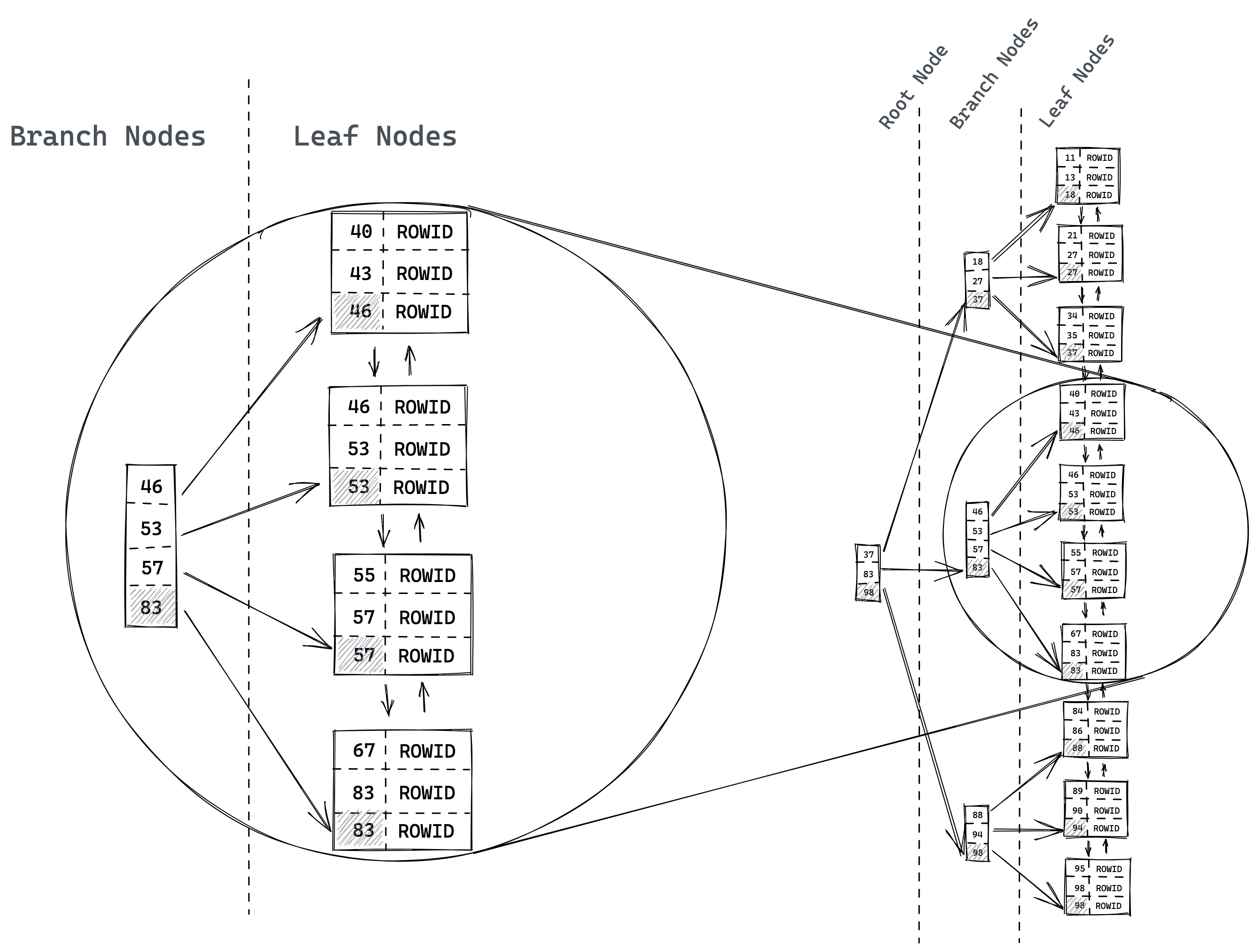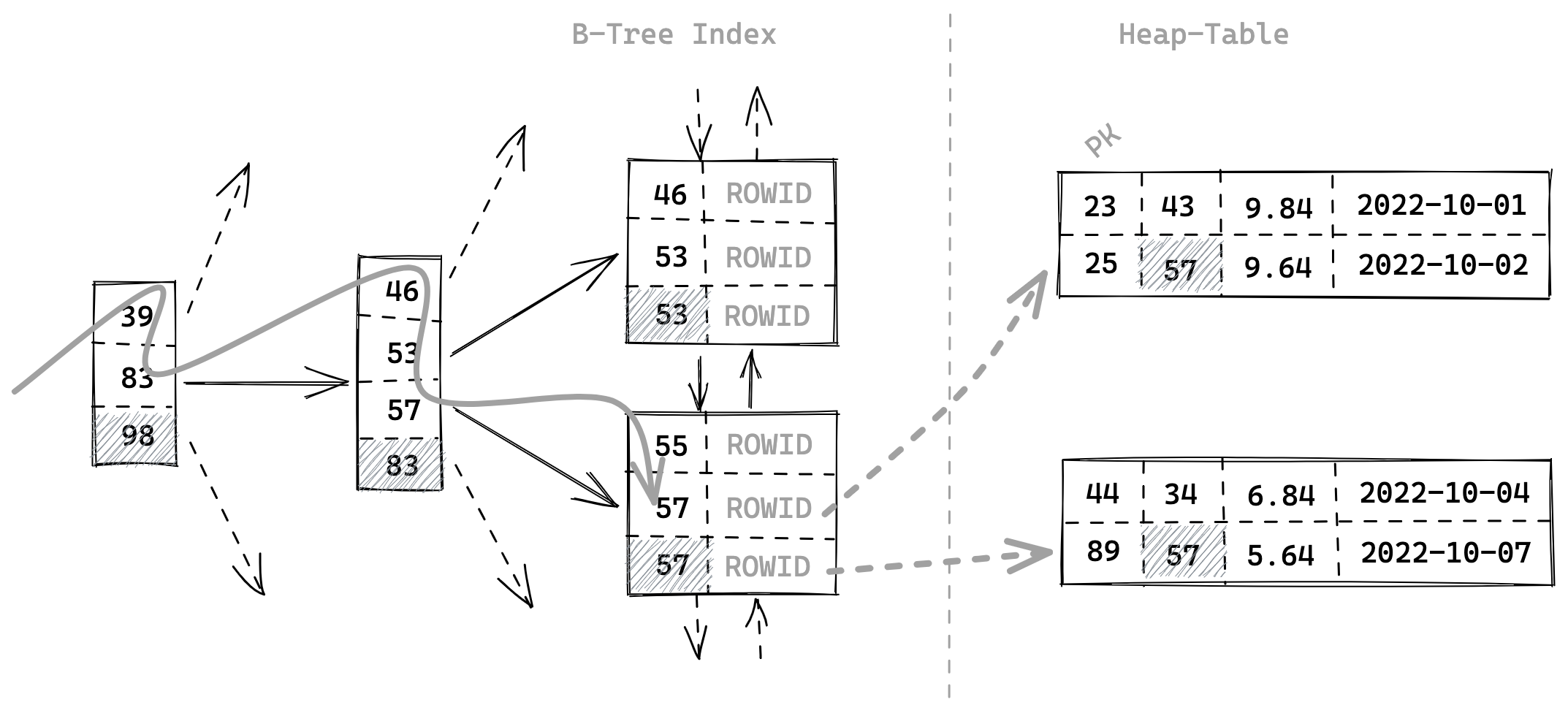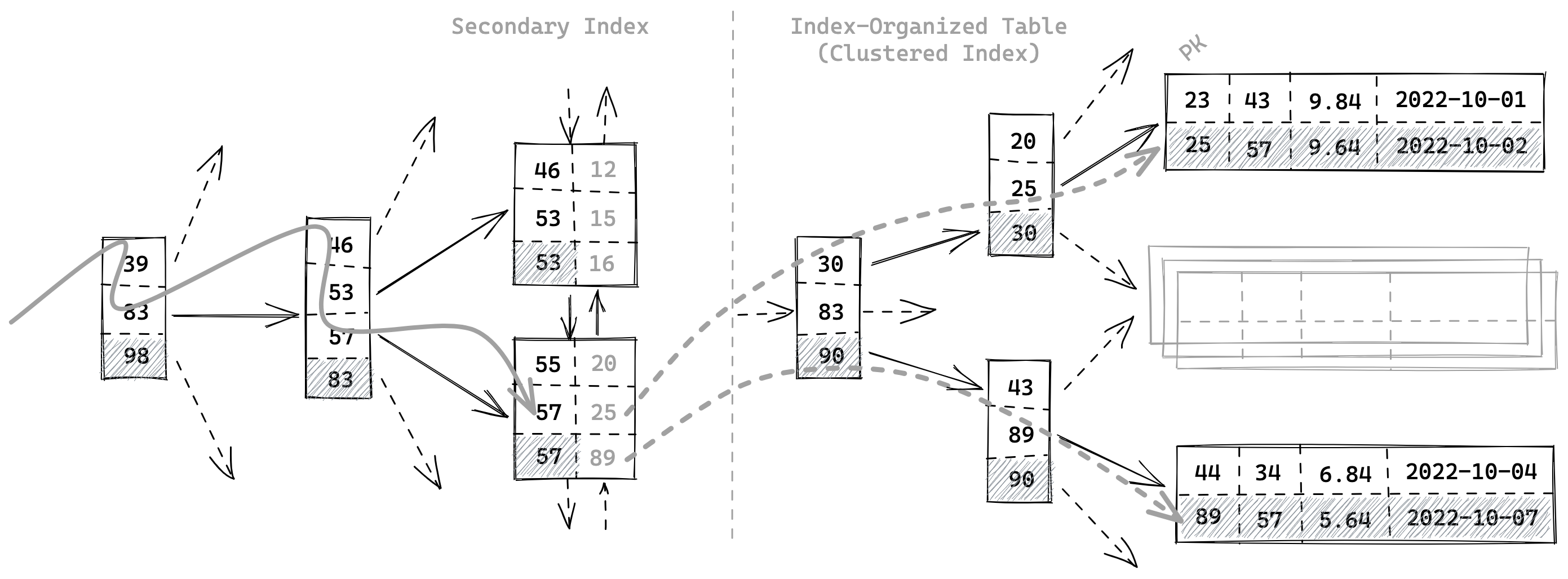Some databases can indeed use an index as primary table store. The Oracle database calls this concept index-organized tables (IOT), other databases use the term clustered index. In this section, both terms are used to either put the emphasis on the table or the index characteristics as needed.
An index-organized table is thus a B-tree index without a heap table. This results in two benefits: (1) it saves the space for the heap structure; (2) every access on a clustered index is automatically an index-only scan.
索引组织表以主键顺序组织物理数据存储,索引结构中的每个叶节点(Leaf Nodes)都存储着完整的行数据。对应的主键被称为聚簇索引(Clustered Indexes)(若没有定义主键,则第一个 NOT NULL UNIQUE 列是聚集索引;若没有 NOT NULL UNIQUE 列,InnoDB 会创建一个隐藏的 row-id 作为聚集索引。),除此之外的索引称为二级索引(Secondary Indexes)。

Figure 1: b-tree-structure

Figure 2: index-based-access-on-a-heap-table
B-Tree 的上级 leaf nodes 存储的是下级 leaf nodes 中列值的最大值,可以从图中看出最底层的 leaf nodes 存储的是 ROWID,可以据此查找到堆表中的位置。

Figure 3: secondary-index-on-an-IOT
索引组织表的缺点
图 secondary-index-on-an-IOT 就是索引组织表中,二级索引获取数据的流程。这个流程在中文中叫做「回表(Table access by index rowid)」。
索引组织表的好处
- 可以节省堆表占用的空间
- 访问聚簇索引可以直接获取数据(即「覆盖索引(covering index)」)
- 二级索引需要回表,即需要根据二级索引的叶节点内的主键,再对主键形成的聚簇索引进行遍历,查找到具体的记录。